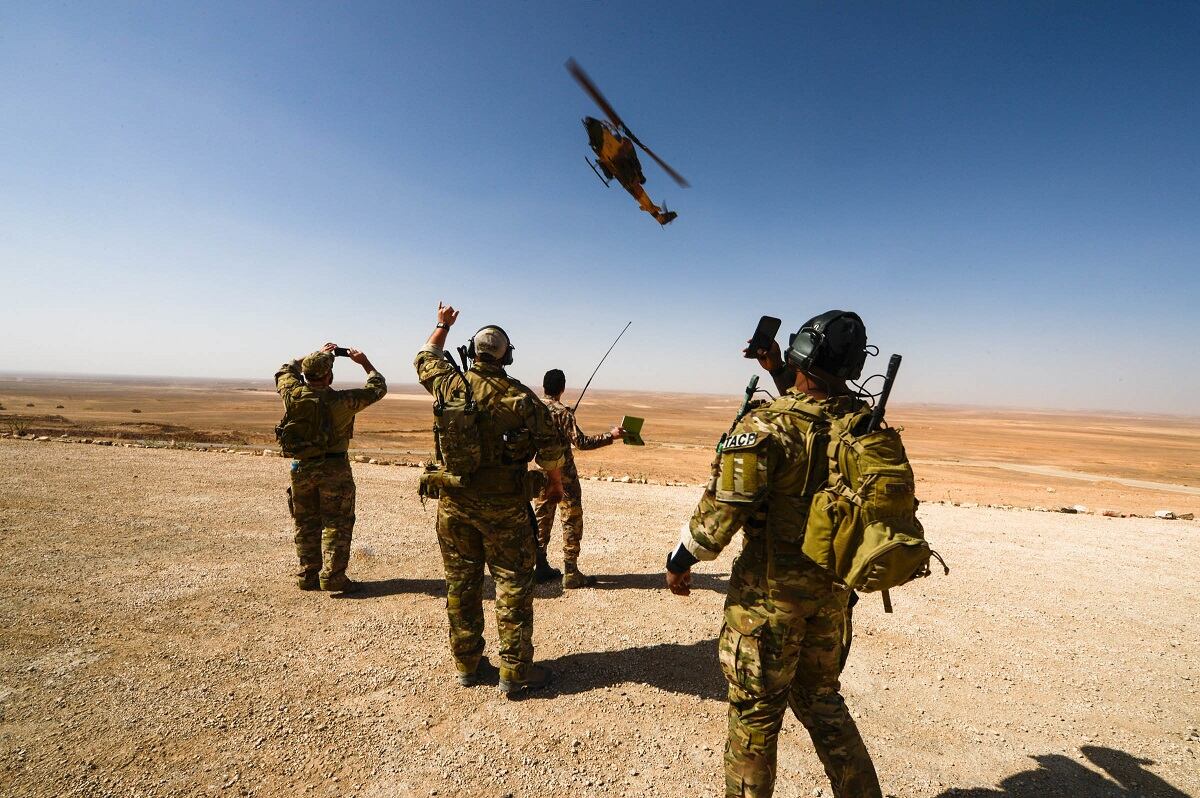AMMAN, Jordan — The U.S. and its Middle East special operations partners must continue to improve relations if they are to counter growing complexities in the region, the head of U.S. Special Operations Command said May 7 at the Middle East Special Operations Commanders Conference.
The conference’s theme this year focuses on hybrid warfare in the global gray zone. “The gray zone conflicts that involve the use of an adaptive mix of conventional, irregular terrorism and/or criminal means are nothing new for special operations forces,” Gen. Raymond Thomas said.
The special ops forces have worked well together in the recent past on the battlefield and in exercises. But “today’s gray zone conflicts do, however, present new challenges. They are distinguished by the proliferation of advanced technology at very low cost, advancements in computing and networking power, in communications security and unmanned aerial systems, to cite a few of the more salient characteristics,” he said.
“Availability of rapidly evolving technology represents a very low barrier of entry to operationally effective capability of malign actors; the increasing speed and movement of information and people around the globe allows them to extend their operational reach in ways considered the domain of science fiction in previous years,” Thomas added.
So as the operational environment grows more challenging, Thomas offered three areas where special operations forces can improve ― areas that not only apply to the Middle East but globally:
- Build stronger alliances and partnerships.
- Share information.
- Enhance interoperability.
He noted that the U.S. has already made “significant, permanent, enduring investment” of personnel and resources to sustain and grow alliances and partnerships, currently playing host to nine foreign liaison officers and 23 exchange officers at USSOCOM’s headquarters in Florida.
USSOCOM also has six foreign exchange officers in its special operations force service components that, in turn, advise their respective commanders and strengthen critical relationships. The command has also sent 21 American special operations liaison officers around the world to work closely with other militaries.
And for instance, USSOCOM, through its multinational special operations forces partnership, is working to help the Afghans double their special operations forces this year as the country combats the Islamic State group and prepares to provide safety and security for upcoming parliamentary elections in the fall ― followed by a presidential election in 2019 ― Thomas said.
“Today, private industry has overtaken state governments in the development and use of technology, and the open market provides more people more access to more types and amounts of data than ever before. So the challenge today is not the preservation of closely held technology and information but making sense of what is openly and readily available,” he noted.
Publicly available information is “part of this new phenomenon,” he added. “This is where the strength of networks are most impacted when special operations forces professionals from different countries sit down together and share insights and perspectives on a common set of facts, or point one another to key data sources openly available to anyone. But perhaps obscure or imperceptible to most, real effects can be achieved towards our common goals.”
Information sharing and joint development of the most effective techniques to address root causes of violent, extremist ideology should increase, according to Thomas.
Such information sharing has already helped sort out some of the most difficult situations in the fight against ISIS during the retaking of Mosul, Iraq. Driving ISIS from Mosul took precision strikes against militants, who hid among the civilian population in the complex urban environment. The challenge was compounded with the fact that ISIS was regularly willing to use civilians as human shields.
“The adversary using human shields and our painstaking efforts to ensure there was no collateral damage as we try to clear those urban environments” was a nuanced challenge not normally confronted in conflict, Thomas said. The Iraqi forces “were masterful in a very tough fight” against an adversary with no concern for collateral damage, he added.
Being able to engage ISIS targets without harming civilians meant complex coordination based on robust intelligence sharing. “Greater sharing of information extends beyond the information itself to the establishment of common information-sharing systems, platforms and data networks,” Thomas said.
Recognizing the need, USSOCOM developed the All Partners Access Network — or APAN — which allows the U.S. to share information for humanitarian assistance, disaster relief, and exercise planning and conferences with partners.
Other networks allow partners to share command and control, exchange analytical information, coordinate engagements, conduct mission planning, and share intelligence in support of operations, Thomas said.
Interoperability must also improve, he added. “Interoperability is the goal of all forces of disparate doctrine, equipment and training when they share a common mission and common adversaries,” Thomas noted. Interoperability is developed through conferences, exchanges and visits, and is enhanced through exercises like Eager Lion, Invincible Sentry and Eastern Eagle, according to Thomas.
RELATED

More than 7,000 Jordanians and Americans participated in Eager Lion. Senior leaders from 20 nations kicked off the exercise by addressing issues where special operations is “front and center,” Thomas said, such as controlling ungoverned spaces and the flow of transnational terrorist fighters across borders.
The exercise helped to grow the combined special operations forces of both Jordan and the U.S. and more effectively integrate processes, procedures, tactics and thoughts to “better face the threats that challenge the Middle East.”
Jen Judson is an award-winning journalist covering land warfare for Defense News. She has also worked for Politico and Inside Defense. She holds a Master of Science degree in journalism from Boston University and a Bachelor of Arts degree from Kenyon College.








